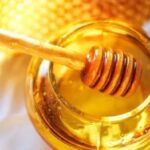Honey has long been revered as a “superfood,” with a shelf life spanning centuries. It boasts an array of nutrients and confers numerous health benefits. Regular and proper consumption of honey can improve one’s overall well-being.
Today, various types of honey are available in the market, including wildflower and cultivated honey, as well as counterfeit versions designed to deceive consumers for economic gain.
Wildflower honey is highly prized as it is wholly natural, untouched by human intervention during the bees’ honey-making process. This variety is typically produced in smaller batches and commands a higher price.
Cultivated honey, on the other hand, is more commonly found. It is usually harvested during the flowering season and offers high nutritional value and delightful flavors, albeit slightly inferior to its wildflower counterpart. The taste and aroma of cultivated honey can vary depending on the flowers from which the bees forage.
Meanwhile, fake honey is made by adulterating honey with sugar, additives, and flavorings. While it may not be toxic, prolonged consumption can have detrimental effects on health. If prohibited additives are used, the impact on the body can be severe. Fake honey might look deceptively similar to genuine honey but lacks its antibacterial properties.
When purchasing honey, you can employ two simple tests to discern its authenticity:

Authenticity Tests for Honey
- Ant Test
Place a drop of honey on a piece of absorbent paper (preferably anti-bleed). Leave it in a place where ants are prevalent. If the ants are attracted and swarm the drop, it’s likely that the honey contains a high concentration of sugar and is possibly fake. Genuine honey contains natural antibiotics that tend to repel ants.
- Water Test
Another method involves using cold water. Draw a small amount of honey into a straw and drip it into a bowl of cold water. Pure honey will sink to the bottom and remain intact, while fake honey will gradually dissolve and mix with the water. Ensure you only use a small amount of honey for this test, as a larger quantity may not have time to dissolve, making it challenging to differentiate between the two types.
Storage and Consumption Tips
Honey should be stored in glass or plastic containers. Glass is preferable, and tinted glass offers additional protection from light. Avoid storing honey in metal containers.
Always seal the container tightly after use to minimize exposure to air.
Store honey in a cool, dry place, away from direct sunlight. There is no need to refrigerate honey, as the heat may cause the natural sugars in the honey to crystallize and settle at the bottom.
According to VnExpress, PGS.TS Nguyen Duy Thinh, a former researcher at the Institute of Biotechnology and Food Technology, Hanoi University of Science and Technology, advises that even healthy individuals should not consume more than 5ml of honey per day.
These tips will help you discern between real and fake honey and ensure you reap the full benefits of this golden nectar.
“Exotic and Delicious: Grilled Char Siu Chicken Thighs”
Here is a mouth-watering twist on a classic dish: Char Siu Glazed Chicken Thighs. This easy-to-make recipe will tantalize your taste buds and impress your family and friends. With a few simple ingredients and a quick preparation time, you can elevate your everyday meal into something extraordinary. Get ready to fire up your grill and indulge in a flavorful feast!



































